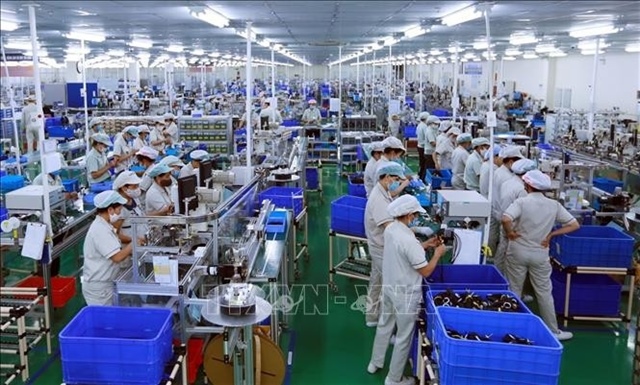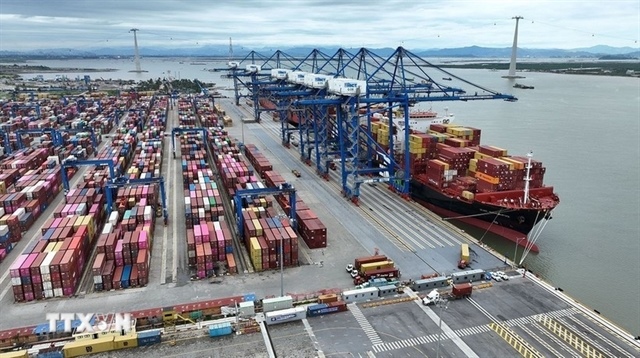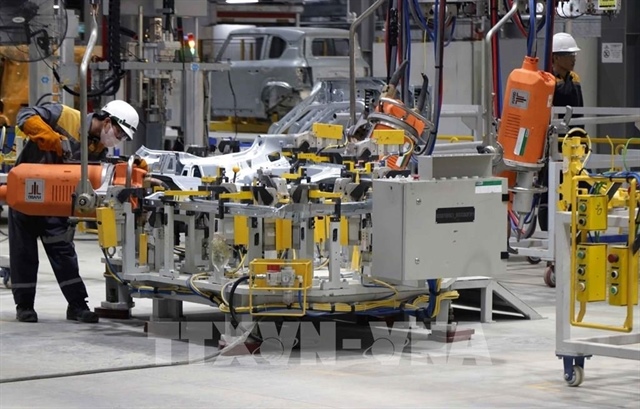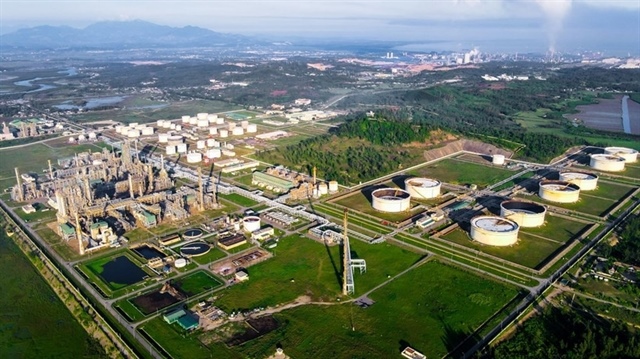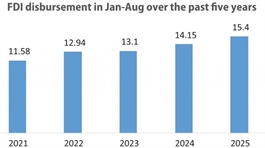Administrative reforms spark economic upswing
Administrative reforms spark economic upswing
Le Duy Binh, director of Economica Vietnam, sheds light on how provincial-level administrative boundary restructuring and policy reforms are powering Vietnam's economic rebound.

Le Duy Binh, director of Economica Vietnam |
What economic improvements have been observed in the months following the provincial-level administrative boundary restructuring?
In July, the first month following the administrative mergers, all indicators improved compared to the previous month, and the same period last year. August even saw a stronger performance than July.
According to fresh data from the National Statistics Office, public investment disbursed by ministries, sectors, and localities in August rose by 32.6 per cent on-year, providing a major boost to economic growth.
The Industrial Production Index (IIP) increased 2.2 per cent compared to July, with particularly impressive growth recorded in major industrial hubs post-merger: Vinh Long up over 10 per cent, Haiphong up 7.8 per cent, and Ho Chi Minh City up 5.4 per cent.
Thanks to these improvements, the IIP for the first eight months of 2025 has maintained solid growth, particularly in the manufacturing and processing sector, the backbone of Vietnam's industrial landscape, which expanded by 10 per cent.
Key industries also saw robust performance, including motor vehicle manufacturing which saw 27.4 per cent jump; rubber and plastic products up 17.5 per cent; non-metallic mineral products up 15 per cent; and apparel manufacturing up nearly 14 per cent, to name but a few.
How have businesses responded to the administrative restructuring?
Not only have businesses felt the effects, but they have also responded rapidly to changes in their regulatory environment, especially following the merger of provinces, cities, wards, and the removal of district-level administration.
NSO's data show that compared to June (before the merger) July's figure saw a sharp decline: new business registrations fell by over 3 per cent, registered capital dropped by 33.6 per cent, and employment numbers fell 42.4 per cent. Meanwhile, the number of businesses temporarily suspending operations rose by more than 14 per cent.
The tide, however, turned dramatically in August, with 20,500 new enterprises established, boasting $13 billion in registered capital and nearly 107,000 new jobs. These figures represent a 24 per cent increase in the number of new businesses, a 2.8-fold rise in capital, and a 35.4 per cent surge in employment compared to July.
Compared to August, the number of new businesses jumped 53 per cent, registered capital grew by more than 2.6 times, and employment rose by 49 per cent.
Thanks to these impressive August results, the number of businesses entering or re-entering the market in the first eight months of this year hit a record 209,000 units. Of these, more than 81,000 returned to operation, up 41.4 per cent on-year.
The total volume of new and supplemental capital surged over 105 per cent on-year.
Notably, VND2.88 quadrillion (equivalent to $115 billion) in capital was injected into the economy by existing businesses, up 183 per cent compared to the same period last year.
These outstanding figures reflect a very strong and positive response from the business community following the administrative reorganisation.
What long-term benefits are expected from the mergers and decentralisation measures?
The reforms are aiming at improving policy mechanisms, reducing both time and financial costs for investors and businesses, and fostering a transparent, streamlined business environment. However, the most powerful catalyst has been the Politburo's Resolution 68-NQ/TW on private sector development and the implementation of administrative boundary restructuring.
The recent mergers are already delivering strong positive impacts on investment and business activities. In the medium and long term, this is expected to be a critical driver of economic growth.
The consolidation of territories enables the combination of comparative and absolute advantages, such as merging coastal economic strengths with those of delta and mountainous regions.
Territorial restructuring will also accelerate the development of intermodal infrastructure, connecting seaports with airports and raw material zones.
With more coherent spatial planning and less fragmentation caused by administrative boundaries, infrastructure projects are expected to become more effective and sustainable.
Alongside the mergers, the central government has actively promoted decentralisation and empowerment for local authorities, enabling them to exercise their responsibilities and powers more proactively.
Following the prime minister's directives, ministries and sectors have now finalised and submitted 28 decrees to the government, covering decentralisation, delegation of powers, and clarification of responsibilities between the central government and the two levels of local government.
This will serve not only as a key driver and lever for economic activities but also as a benchmark to evaluate local leadership in promoting production, business development, and local economic growth.
- 11:11 17/09/2025


